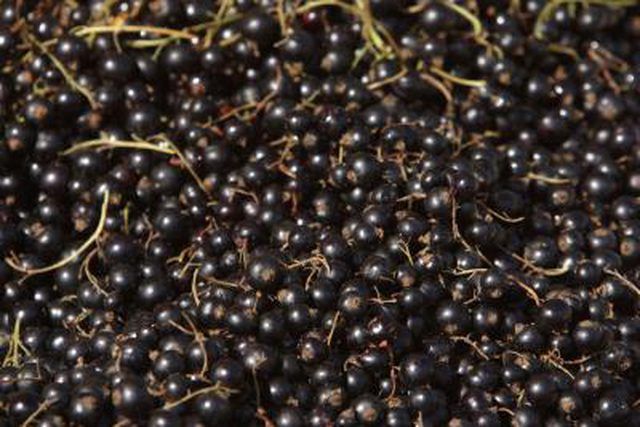Bulbs
Flower Basics
Flower Beds & Specialty Gardens
Flower Garden
Garden Furniture
Garden Gnomes
Garden Seeds
Garden Sheds
Garden Statues
Garden Tools & Supplies
Gardening Basics
Green & Organic
Groundcovers & Vines
Growing Annuals
Growing Basil
Growing Beans
Growing Berries
Growing Blueberries
Growing Cactus
Growing Corn
Growing Cotton
Growing Edibles
Growing Flowers
Growing Garlic
Growing Grapes
Growing Grass
Growing Herbs
Growing Jasmine
Growing Mint
Growing Mushrooms
Orchids
Growing Peanuts
Growing Perennials
Growing Plants
Growing Rosemary
Growing Roses
Growing Strawberries
Growing Sunflowers
Growing Thyme
Growing Tomatoes
Growing Tulips
Growing Vegetables
Herb Basics
Herb Garden
Indoor Growing
Landscaping Basics
Landscaping Patios
Landscaping Plants
Landscaping Shrubs
Landscaping Trees
Landscaping Walks & Pathways
Lawn Basics
Lawn Maintenance
Lawn Mowers
Lawn Ornaments
Lawn Planting
Lawn Tools
Outdoor Growing
Overall Landscape Planning
Pests, Weeds & Problems
Plant Basics
Rock Garden
Rose Garden
Shrubs
Soil
Specialty Gardens
Trees
Vegetable Garden
Yard Maintenance
How to Clone Blackberry Bushes
How to Clone Blackberry Bushes. You can expand your blackberry plantings and greatly increase your harvest without buying new plants. Clone all the plants you need by using various, simple asexual (non-seed) reproduction strategies. Unlike the complicated unnatural processes involved in animal cloning, the business of cloning blackberries is an...

You can expand your blackberry plantings and greatly increase your harvest without buying new plants. Clone all the plants you need by using various, simple asexual (non-seed) reproduction strategies. Unlike the complicated unnatural processes involved in animal cloning, the business of cloning blackberries is an everyday occurrence. Reproducing blackberries by cloning is easily accomplished in the garden by layering stem tips (tip layering), rooting leafy stems, and generating new plants from suckers and root cuttings.
Things You'll Need
Gardening gloves
Pruning shears
Garden shovel
Plastic bags (optional)
Rooting hormone
Perlite or peat-sand rooting mixture
Spray bottle
Layer the tips—the ends of new, growing stems—of trailing or semi-erect blackberry varieties for fast and easy blackberry cloning. Put on gardening gloves. In late summer, when tips abound, pull longer stems away from the plant (still attached) and bury them tip first in about 3 or 4 inches of soil. Pat firmly, and keep moist. The tip will "recurve" and grow upward while the underground stem will sprout roots to establish a new plant, nourished by the mother plant. In the spring when young plants are established, snip the attachment stem with pruning shears, dig up the clone with a garden shovel and transplant it elsewhere.
Create new blackberry transplants by separating blackberry suckers from existing berry clumps with a sharp "slice" from your shovel. This is easier and quicker than layering if you don’t mind the exercise. Suckers are actually new plants that sprout from buds on roots, and severing the sucker won't damage the mother plant. (Dig down a bit and remove some soil to see where suckers attach if you're unsure where to slice.) In the spring when new suckers are apparent, slice off these new plants—making sure to get some root as well as stem—and transplant them to their new neighborhood.
Propagate most erect blackberry varieties from root cuttings. Dig around existing plants in January or February when they are fully dormant, slicing off and separating chunks of roots. (Replace whatever soil you removed in the process; established plants will be unaffected.) Cut these separated root sections into 4- to 6-inch-long pieces that are pencil-sized in thickness. Plant these dormant root cuttings directly in new beds or in starter pots, or refrigerate them inside plastic bags, keeping them dormant until you’re ready to plant.
Root leafy stems of any bramble—a popular term for both blackberries and raspberries—by snipping stem tips, 4 to 6 inches in length, from mid-summer canes. Dip the cut ends (to be rooted) in rooting hormone, and plant each 2 inches deep in perlite or peat-sand rooting mixture. Keep rooting medium well watered—but also well drained—and mist stems regularly with a spray bottle filled with water for one month while new plants take root. This is the best approach if you want to create large numbers of new plants.
Tips & Warnings
Invite children to help layer blackberry tips because it’s useful work and an enjoyable nature lesson.
Many newer blackberry varieties are protected by U.S. patent law and are illegal to propagate without the patent owner’s permission.
Some thornless trailing blackberries will produce thorny shoots if propagated from root cuttings. Try tip layering instead.